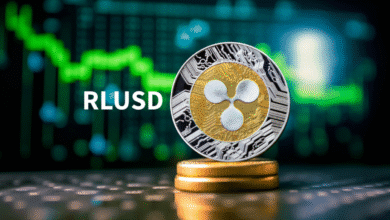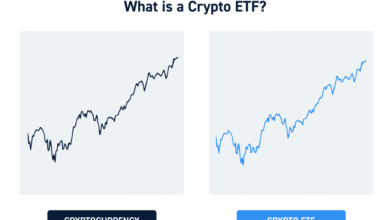Bitcoin Independence Day: Market Stagnation Explained

Bitcoin Independence Day falls on a momentous occasion when enthusiasts look toward the future of cryptocurrency, even as recent events prompt questions about market resilience. This year, Bitcoin (BTC) has remained stagnant, hovering around the $107K mark despite a backdrop of significant macroeconomic activity designed to stir investment interest. Traditional markets celebrated U.S. Independence Day, yet the leading digital asset has shown little movement, reflecting the ongoing Bitcoin price fluctuations that many are analyzing closely. While Bitcoin trading volume dipped during the holiday, traders and analysts alike are hoping for a rebound as they scrutinize cryptocurrency trends and potential impacts on BTC market analysis. As passive momentum persists, crypto investors watch intently, eager to see if Bitcoin can break free from this lull and celebrate independence with renewed vigor in the markets.
Celebration of Bitcoin Independence Day signifies more than just an anniversary; it embodies aspirations for a decentralized future amidst financial complexities. The cryptocurrency’s trading performance has been far from enthusiastic, with BTC grappling to maintain consistent pricing despite notable developments in global markets. While investors sought direction, the notable lack of volatility has left many pondering the current state of Bitcoin and its resilience against broader economic indicators. As trading activity shrank significantly during the recent holiday, stakeholders are now turning their focus toward the latest cryptocurrency trends and the intricate relationship between digital assets and traditional financial systems. In this festive context, the question looms: will Bitcoin find its momentum once again, or will it continue to drift along the currents of uncertainty?
Bitcoin Independence Day: A Pause in Price Action
Bitcoin’s price has been remarkably stagnant this week, trading within a narrow range around $107K. Despite the celebrations of U.S. Independence Day, which often evoke increased trading volumes and interest in financial markets, BTC has shown little responsiveness to significant economic events. Investor sentiment remains cautious, with many traders looking for indicators to spark movement in the BTC market. The Independence Day atmosphere in traditional markets, coupled with skepticism about Bitcoin’s performance, has contributed to this calm in volatility and trading activity, leading many cryptocurrency enthusiasts to express their frustration.
As we delve deeper into the cryptocurrency trends surrounding Bitcoin on Independence Day, it’s crucial to analyze the factors contributing to this lull. While traditional assets are experiencing a rally linked to positive macroeconomic indicators—like improved job numbers and potential economic policies—the cryptocurrency market’s reaction appears muted. This phenomenon echoes previous instances where Bitcoin price fluctuations did not align with traditional market surges, highlighting the unique dynamics and potential disconnect within the crypto space.
Current Bitcoin Market Analysis
Analyzing the latest BTC market data reveals nuanced insights into Bitcoin’s trading behavior. With a reported trading volume dip of 23% to $43.31 billion in light of the Independence Day holiday, this decrease underscores the impact of seasonal factors on cryptocurrency participation. The market capitalization of Bitcoin has also seen a slight decline, dipping by about 1.49% to $2.14 trillion. Interestingly, despite these declines, Bitcoin’s dominance charted a minor increase, suggesting that while prices may be flat, interest in Bitcoin remains supremely significant in the cryptocurrency landscape.
Market analysts are now closely monitoring the BTC trading volume as it influences Bitcoin price stability and future patterns. This current lull offers a double-edged sword—on one hand, lower trading volumes can signal decreased investor enthusiasm; on the other, they may set the stage for sharp upward movements should more substantial trading re-enter the market. As traders await indicators from the broader markets and economic conditions, interest in the potential for sudden BTC price shifts will remain a focal point of market analysis.
Bitcoin and Volatility: Understanding Fluctuations in Price Movement
Bitcoin is well-known for its inherent volatility, which has always been a hallmark of its trading history. Recently, despite the external push from macroeconomic factors, Bitcoin has remained unusually subdued. The cryptocurrency’s fluctuations have become less pronounced, leading to concerns among traders about potential market directionality. This period of stability raises questions about the equilibrium of supply and demand in the Bitcoin market and what may trigger the next upward or downward trend.
The historical data shows that while Bitcoin can remain dormant for various periods, these lulls are often followed by sharp spikes in price due to pent-up demand or an influx of new investments. Observing the recent drop in trading volume alongside a weakened market capitalization offers insights into the current sentiment and possible future volatility. As indicators suggest an impending change, traders remain vigilant, utilizing technical analysis and market signals to strategize their next moves.
Macroeconomic Events Influence BTC Movement
The relation between Bitcoin’s performance and macroeconomic events is a crucial topic in today’s financial discussions. Recent developments, including job growth and significant legislative actions, should theoretically catalyze positive BTC price movements. However, the reality has shown Bitcoin staying largely unmoved, suggesting that current investor sentiment may be leaning towards caution. The correlation with traditional markets, highlighted by Bitcoin maintaining a 60% correlation with the S&P 500, indicates that any bullish sentiment in stock markets could play a pivotal role in revamping trader interest in Bitcoin.
As the economic landscape continues to change with new policies and financial reports, traders and analysts alike are keeping a watchful eye on how Bitcoin interacts with these shifts. The patterns observed in Bitcoin trading during pivotal economic moments provide invaluable data for forecasting price movements, and understanding how these external variables impact market behavior is essential for navigating the ever-evolving cryptocurrency space.
The Role of Trading Volume in Bitcoin’s Stability
Trading volume is a key indicator of market health and liquidity, vital for any cryptocurrency, especially Bitcoin. The 23% drop in trading volume, stemming partly from the U.S. Independence Day holiday, raises questions about the potential impacts on Bitcoin’s price stability. Reduced trading activity often leads to lower price volatility, resulting in additional challenges for active traders looking to exploit market fluctuations.
Low trading volumes can also reflect a lack of investor confidence or interest during certain periods, which can be pivotal for Bitcoin’s future direction. Increased engagement from both retail and institutional investors is necessary to revive Bitcoin’s trading momentum and, ultimately, influence price movements positively. As interest ramps back up following holiday pauses, the upcoming weeks may reveal how quickly trading volume can rebound, which is crucial for boosting Bitcoin’s price and overall market activity.
Strategies for Bitcoin Investors During Lulls
For Bitcoin investors, periods of low price movement can be challenging yet strategically advantageous. Employing waiting strategies can be beneficial as investors should rely on thorough analysis rather than succumbing to market emotions during slow periods. Many seasoned traders utilize this time to study market dynamics, technological advancements within the blockchain space, and broader economic trends that may soon affect Bitcoin prices.
Diversification remains a significant strategy for managing risk while focusing on Bitcoin investment. As market fluctuations become less predicable during these lulls, investors are encouraged to consider a broader portfolio within the cryptocurrency space or even explore stablecoins and altcoins that might be poised for upward movements. The potential for Bitcoin independence day to result in renewed vigor within the market should encourage investors to stay informed and adaptable in their investment strategies.
Future Predictions for Bitcoin: A Look Ahead
Looking toward the future, industry experts speculate on potential price trajectories for Bitcoin amid current market conditions. While it has languished in price near $107K this independence week, various analysts provide insights suggesting that upcoming catalysts could propel BTC above resistance levels. Key indicators, including overall market sentiment and forthcoming regulatory frameworks, will likely dictate the forthcoming price action, as past events have consistently shown that regulatory news can spur significant price movements.
Furthermore, aligning Bitcoin’s performance with global economic trends may provide hints about potential price scalability moving forward. Given Bitcoin’s recent price stability, the market awaits confirmation of a new developmental phase that could invigorate trading dynamics. As traditional markets continue to thrive and investor sentiment shifts, expecting heightened market participation in Bitcoin could create an upward momentum in the long term.
Cryptocurrency Trends Post-Independence Day
After the recent Independence Day celebrations, the cryptocurrency landscape hints at a potential for emerging trends in the market. The current lull in Bitcoin’s price movement may reflect a transitional phase as investors reassess their positions in response to macroeconomic changes and market sentiment. Understanding these trends post-celebration will be essential for adapting investment strategies moving forward.
Moreover, as new legislation promotes ‘Crypto Week’ and draws attention to the cryptocurrency landscape, investor engagement is likely to increase. This surge in interest could lead to changes in trading volume, price fluctuations, and overall market dynamics for Bitcoin and its counterparts. As we analyze the aftermath of Bitcoin Independence Day, keen observation and analysis will help investors predict which trends may dominate the cryptocurrency sector in the coming weeks and months.
Frequently Asked Questions
What does Bitcoin independence day signify in relation to Bitcoin price trends?
Bitcoin independence day often refers to significant milestones in Bitcoin’s history when its price or adoption saw major changes. Understanding these historical moments can provide insights into current Bitcoin price trends and future fluctuations.
How is Bitcoin independence day affecting BTC market analysis this year?
This year, Bitcoin independence day has coincided with a period of stagnant BTC market analysis, as Bitcoin’s price has remained stable around $107K despite macroeconomic events. Analysts are scrutinizing trading volumes and price movements to determine the implications for the future.
What are the cryptocurrency trends associated with Bitcoin independence day?
Cryptocurrency trends around Bitcoin independence day highlight increased market scrutiny and potential volatility. Despite a lack of movement this year, historical patterns suggest that such dates can lead to significant shifts in Bitcoin price and trading volume.
Why did Bitcoin’s trading volume decrease on independence day?
Bitcoin’s trading volume dropped by 23% on independence day due in part to traditional market closures and the holiday’s impact on trader activity. This reduction reflects how holidays affect cryptocurrency trading dynamics and Bitcoin price fluctuation.
What influence does Bitcoin price fluctuation have on market sentiment during independence day?
During independence day, Bitcoin price fluctuation can significantly influence market sentiment. For example, despite a steady Bitcoin price around $107K, the lack of volatility during this period has resulted in mixed feelings among investors and analysts.
| Key Point | Details |
|---|---|
| Bitcoin Price Stability | Bitcoin has been stuck at around $107K with minimal movement this week. |
| Market Influence | Despite major economic developments, Bitcoin has shown little to no price reaction. |
| Trading Activity | Trading volume decreased by 23% to $43.31 billion due to Independence Day. |
| Market Cap and Dominance | Bitcoin’s market cap fell 1.49% to $2.14 trillion, but BTC dominance increased by 0.02%. |
| Futures Activity | Total BTC futures open interest decreased by 4.26%, with significant liquidations of long positions. |
Summary
Bitcoin Independence Day has seen the cryptocurrency treading water without significant price movement. Despite a backdrop of positive macroeconomic developments, such as job growth and legislative support for cryptocurrency, Bitcoin’s price has remained stagnant around $107K. The trading volume declined, reflecting the holiday influence, while market capitalization fell slightly. This period highlights Bitcoin’s unique position within the financial market, showing how various factors can affect market dynamics without initiating expected reactions. Investors and traders are left watching closely as Bitcoin continues to navigate the waters surrounding its independence.




